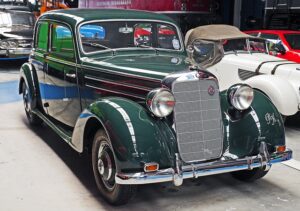Introduction
Rebuilding a Holley carburetor is a task that requires careful attention to detail and a basic understanding of the inner workings of the carburetor. Whether you are restoring a classic car or simply looking to improve the performance of your engine, rebuilding a Holley carburetor can help ensure optimal fuel delivery. In this article, we will dive into the step-by-step process of rebuilding a Holley carburetor, providing you with the knowledge and guidance you need to successfully complete the task.
Gather the Necessary Tools and Materials
Before diving into the rebuilding process, it is important to gather all the necessary tools and materials. Here are some of the key items you will need:
Materials used:
– Carburetor rebuild kit (specific to your Holley carburetor model)
– Carburetor cleaner
– Compressed air
– Gasket sealer
– Lubricating oil
Tools used:
– Screwdrivers (flathead and Phillips)
– Wrenches (various sizes)
– Needle-nose pliers
– Wire brush
– Safety glasses
Disassemble the Carburetor
The first step in rebuilding a Holley carburetor is to disassemble it. Start by removing the air cleaner and disconnecting any fuel lines attached to the carburetor. Carefully remove the carburetor from the intake manifold and place it on a clean work surface. Begin disassembling the carburetor by removing the fuel bowls, metering blocks, and main body. Take note of the order and orientation of the parts as you remove them, as this will be important during reassembly.
Clean the Carburetor Components
Once the carburetor is disassembled, it is crucial to thoroughly clean all the components. Use a carburetor cleaner to remove any dirt, debris, or old gasket material from the parts. A wire brush can be helpful in scrubbing away stubborn residue. After cleaning, use compressed air to blow out any remaining debris and ensure that all passages are clear.
Inspect and Replace Worn Parts
With the carburetor components cleaned, carefully inspect each part for signs of wear or damage. Pay close attention to gaskets, seals, and diaphragms, as these are common areas of failure. If any parts are worn or damaged, replace them with new ones from the carburetor rebuild kit. It is important to use the specific parts provided in the kit, as they are designed to fit your particular Holley carburetor model.
Reassemble the Carburetor
Once all the necessary parts have been replaced, it is time to reassemble the carburetor. Refer to the manufacturer’s instructions or a detailed diagram to ensure that each component is correctly installed. Apply a thin layer of gasket sealer to any gaskets before placing them in position. Take care to tighten all screws and bolts to the specified torque settings, as over-tightening can cause damage.
Tune and Adjust the Carburetor
After reassembling the carburetor, it is important to tune and adjust it for optimal performance. Start by setting the idle mixture and speed screws according to the manufacturer’s specifications. Use a vacuum gauge or a tachometer to aid in the tuning process. Fine-tune the carburetor by making small adjustments and testing the engine’s performance. It may take some trial and error to achieve the desired results, but patience and persistence will pay off.
Conclusion
Rebuilding a Holley carburetor is a task that requires attention to detail and a systematic approach. By following the step-by-step process outlined in this article, you can successfully rebuild your Holley carburetor and ensure optimal fuel delivery for your engine. Remember to gather all the necessary tools and materials, carefully disassemble and clean the carburetor components, inspect and replace worn parts, reassemble the carburetor correctly, and tune and adjust it for optimal performance.
References
– Holley Performance Products: www.holley.com
– Summit Racing Equipment: www.summitracing.com
– Jegs High Performance: www.jegs.com













